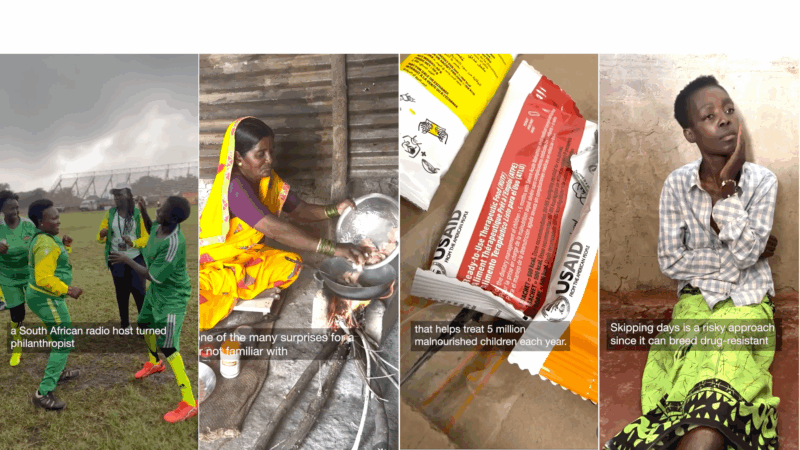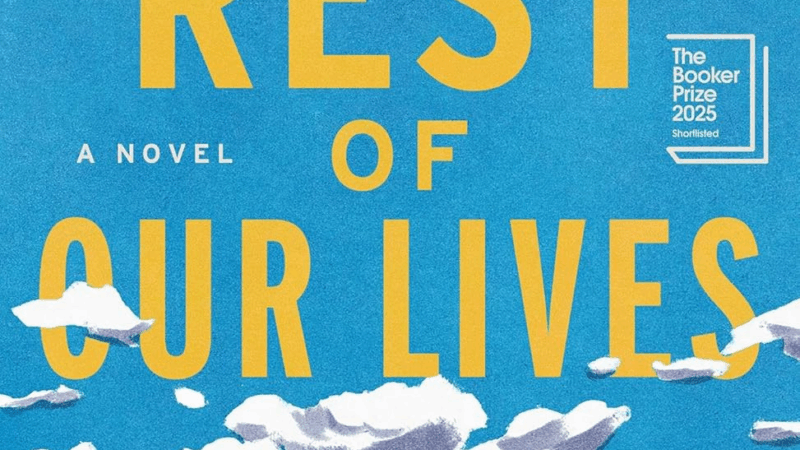An AI divide is growing in schools. This camp wants to level the playing field
Up until recently, 16-year-old Esraa Elsharkawy was an artificial intelligence skeptic.
“I just thought AI just was kind of creepy,” she says.
She worried the technology would take jobs away from humans, and she didn’t understand how it worked — but she wanted to learn more.
The only problem: She couldn’t get that kind of education at her high school in Katy, Texas. Her school district only recently provided all students from third grade through 12th with their own Chromebook, and Elsharkawy says she had to teach herself how to code.
For years, research has shown there’s a digital divide when it comes to schools teaching about new technologies. For example, affluent suburban schools are more likely to have computer science classes than districts in poorer urban and rural areas.
Now, new research shows that’s also playing out with artificial intelligence.
A free summer camp at Princeton University wants to help close the gap: AI4All invites about 30 high schoolers from low-income families to spend three weeks living on campus, learning about the math that powers generative AI.
Elsharkawy attended the camp this summer and says the experience changed her perception of AI.
“I believe AI is a tool and that if we use AI as a tool to do simple things, then we’ll have clearer minds to think of things that are way ahead of our league right now, like solving cancer, for example.”
She says the AI4All program “definitely helps with the digital divide.”
What the AI digital divide looks like in schools
Robin Lake, director of Arizona State University’s Center on Reinventing Public Education, studies how K-12 schools are beginning to use AI in the classroom.
She says, “The AI divide is starting to show up in just about every major study that I’m seeing.”
A teacher survey from the Walton Family Foundation and Gallup found that in the 2024-2025 school year, teachers were more likely to teach themselves how to use AI than to receive training from their schools. Only 19% of teachers said their school had a policy on how to use AI.
In her own research, Lake has found that suburban, majority-white and low-poverty school districts are about twice as likely to provide AI training to teachers as are urban, rural or high-poverty districts.
And a recent Gallup survey found that students in low-income and rural areas are the least likely to say their schools let them use AI or have rules about it.
Lake says she has spoken with teachers who say the divide also exists within classrooms: Some students are already using AI to improve their essays and research skills.
“And then other students in the classroom have barely even heard about AI and don’t know how to use it effectively,” Lake explains. “So teachers are concerned.”
Learning what AI can do
On a mid-July afternoon, AI4All campers sit in a group inside a lecture hall and listen closely to Princeton professor Jaime Fernández Fisac as he explains how AI can help drones fly better. The concepts are complex, but the high schoolers are following along. They ask questions, like: How can a mathematical model possibly account for all the variables — like the weather and human behavior — to ensure a drone gets to where it’s going?
“Our models of the robot are always going to be wrong,” Fisac says. But AI can help keep the drone on the right course “by allowing the robot to correct a little bit each time it makes a decision.”
The lesson is especially meaningful for 16-year-old Anthony Papathanasopoulos.
“In Oregon, I had to evacuate my home in 2020 due to the Beachie Creek fires that happened, and I’m really interested in seeing how AI can be used to solve problems like that,” he says.
He explains that AI could help drones map and monitor forests for wildfires.
Papathanasopoulos says there’s no AI education in his community but there should be, because people from rural backgrounds are uniquely positioned to help solve the challenges they face.
“I think having a rural background is really important to understanding how AI can be used,” he says.
Elsharkawy — the 16-year-old from Texas — agrees that it’s not just about who has access to AI but who is building it. It’s part of what drove her to attend the AI4ALL camp in the first place.
“As a woman, Muslim hijabi, I’m not really represented in a lot of things … and I wanted to be like one of the people who change AI, who shape AI for the future.”
An effort to “democratize AI education”
Princeton computer science professor Olga Russakovsky co-founded AI4All, which is also a national nonprofit.
Russakovsky says she saw the need for more diversity in the AI field when she was a Ph.D. student at Stanford University in the mid-2010s. Even then, she says she knew an “AI revolution” was coming, and she was worried by the fact that most people working on the technology came from similar backgrounds.
Given its transformative potential, Russakovsky says, she felt the need to “democratize AI education.”
While at Stanford, she helped launch a summer camp to familiarize high school girls with AI. Then, when she became a faculty member at Princeton, she brought the program with her and expanded it to high schoolers from low-income families. At Princeton, campers work on AI solutions to real-life challenges in medicine, robotics and environmental science, alongside Princeton faculty and students.
“There’s so, so much that this technology can do. There’s so many problems in the world that it can address. And what we want to make sure is that this technology really benefits everybody,” Russakovsky says.
She says the stakes are high if schools, universities and governments fail to broaden access to AI education and participation in the field.
“We’re going to miss out on the potential of this technology,” Russakovsky says. “Any kind of industry … we can dramatically change it for the better with AI, but we can also change it for the worse.”
Teachers are worried about AI
Public K-12 teachers see both benefits and risks in AI, according to the survey from Gallup and the Walton Family Foundation. The survey found that teachers who use AI regularly are more optimistic about its impact on education than those who don’t. But teachers don’t agree on whether the technology will improve student outcomes.
On the positive side: A majority of those surveyed believe AI will improve accessibility of learning materials for students with disabilities.
Still, 40% of the more than 2,000 teachers polled say they don’t use AI at all. And more than half believe weekly use of AI by students would decrease their ability to think independently and critically.
Another recent survey by Gallup, the Walton Family Foundation and GSV Ventures found that nearly half of Generation Z students think AI will hurt their ability to think about information carefully.
Sixteen-year-old Ryan Chou, an AI4All camper from Daly City, Calif., says young people will encounter AI “one way or another, whether through school or just like browsing the web.”
He says students need to learn about it to understand how it works and “to make sure they take whatever the model tells them with a nuanced point of view.”
Chou says there’s a significant need for more programs like AI4All.
“I think our camp, it was a very small movement, but it had a very big impact on each of us. And if we could expand it to more communities … we could help bridge the gap between these low-income communities and the more affluent communities.”
Transcript:
ARI SHAPIRO, HOST:
Research has shown for a long time that there’s a digital divide between schools in teaching new technologies. So wealthy suburban schools are more likely to have computer science classes than districts in poor, urban or rural areas. Well, now, new research shows that’s also playing out with artificial intelligence. Educators worry that could leave some students behind in an AI-powered economy. Lee Gaines visited a summer camp in New Jersey that wants to help close the gap.
LEE GAINES, BYLINE: Before this summer, 16-year-old Esraa Elsharkawy was an AI skeptic.
ESRAA ELSHARKAWY: I just thought AI just was kind of creepy and it just figured out stuff.
GAINES: She worried it would take jobs away from humans, and she didn’t understand how it worked, but she wanted to. Esraa couldn’t get that kind of education at her high school in Katy, Texas, so this year, she applied and was accepted into a free AI summer camp at Princeton University.
ESRAA: Now I’m very supportive of AI ’cause I believe AI is a tool and that if we use AI as a tool to do, like, simple things, then we’ll have, like, I guess, clearer minds to, like, think of, like, things that are way ahead of our league right now, like solving cancer, for example.
GAINES: Esraa is 1 of 30 high schoolers from low-income families who spent three weeks at Princeton’s AI4ALL summer camp. They learned how AI works and how they might shape it, and they worked on AI solutions to real world environmental and medical challenges.
ROBIN LAKE: I think it’s so exciting, and we need much more of that across the country.
GAINES: Robin Lake is director of the Center on Reinventing Public Education based at Arizona State University. She studies how schools are beginning to use AI in the classroom.
LAKE: The AI divide is starting to show up in just about every major study that I’m seeing.
GAINES: Her research found that affluent and suburban districts are more likely to provide AI training to teachers than high-poverty or rural districts. And a recent Gallup survey found students in low-income and rural areas are the least likely to say their schools let them use AI or have rules about it. That hasn’t stopped some students from using AI for a leg up.
LAKE: And they’re starting to use AI to improve their grades, you know, improve their essays, improve their research skills, things like that. And then other students in the classroom have barely even heard about AI and don’t know how to use it effectively.
GAINES: Princeton computer science professor Olga Russakovsky wants to be part of the solution. She’s a co-founder of AI4ALL.
OLGA RUSSAKOVSKY: There’s so much that this technology can do. There’s so many problems in the world that it can address. And what we want to make sure is that this technology really benefits everybody.
GAINES: Which is why she’s trying to bring AI education to students who otherwise wouldn’t have access to it. On a mid-July afternoon, a group of teens listens closely to Princeton professor Jaime Fernandez Fisac as he explains how AI can help drones fly better.
JAIME FERNANDEZ FISAC: By allowing the robot to correct a little bit each time it makes a decision.
GAINES: The lesson is especially meaningful for 16-year-old Anthony Papathanasopoulos, who says there’s no AI education in his rural community.
ANTHONY PAPATHANASOPOULOS: In Oregon, I had to evacuate my home in 2020 due to the Beachie Creek fires that happened, and I’m really interested in seeing how AI can be used to solve problems like that.
GAINES: He says AI could help drones map and monitor forests for wildfires, and people from his community are uniquely positioned to come up with that kind of solution.
ANTHONY: I think having a rural background is really important to understanding how AI can be used.
GAINES: Esraa Elsharkawy, the 16-year-old from Texas, agrees that it’s not just about who has access to AI, but who is building it. It’s part of what drove her to attend the AI4ALL camp in the first place.
ESRAA: Like, as a woman, Muslim hijabi, I’m not really represented in a lot of things. And so I wanted to, like, be one of the people who change AI, who shape AI for the future.
GAINES: Esraa says the broader the range of people shaping AI, the better it can serve everyone.
For NPR News, I’m Lee Gaines in Princeton, New Jersey.
(SOUNDBITE OF LOLA YOUNG SONG, “MESSY”)
Top Instagram reels from Goats and Soda in 2025: Plumpy’Nut, aid cuts, soccer grannies
Our most-viewed Instagram videos include reports from a Rhode Island factory that makes special food for malnourished children and from a tournament for soccer-playing "grannies."
‘The Rest of Our Lives’ takes readers on a midlife crisis road trip
America's literary highways may be plenty crowded with middle-aged runaways fleeing lives that increasingly feel like a bad fit. But Ben Markovits adds a moving tale to the collection.
Hunker down with these 13 mysteries and thrillers from 2025
Mysteries and thrillers are enjoyable no matter the season, but there's something extra satisfying about curling up in the winter with a warm drink and an all-engrossing read. Here's what we suggest.
Should the U.S. model its vaccine policy on Denmark’s? Experts say we’re nothing alike
The Trump administration wants to revamp U.S. childhood vaccination recommendations to align with some other peer nations, including one tiny country in northern Europe.
Marijuana rescheduling would bring some immediate changes, but others will take time
President Trump set the process in motion to ease federal restrictions on marijuana. But his order doesn't automatically revoke laws targeting marijuana, which remains illegal to transport over state lines.
The cultural works becoming public domain in 2026, from Betty Boop to Nancy Drew
The original Betty Boop, the first four Nancy Drew books and Greta Garbo's first talkie are among the many works from 1930 that will be free to use, share and remake starting on Jan. 1.








